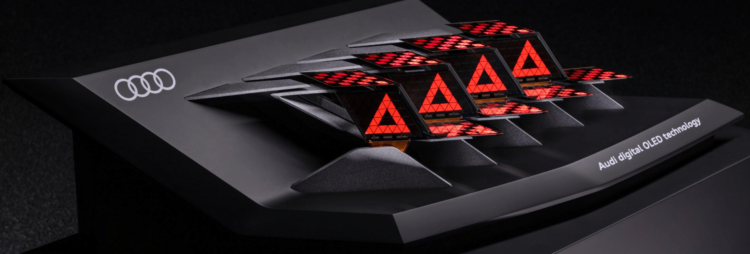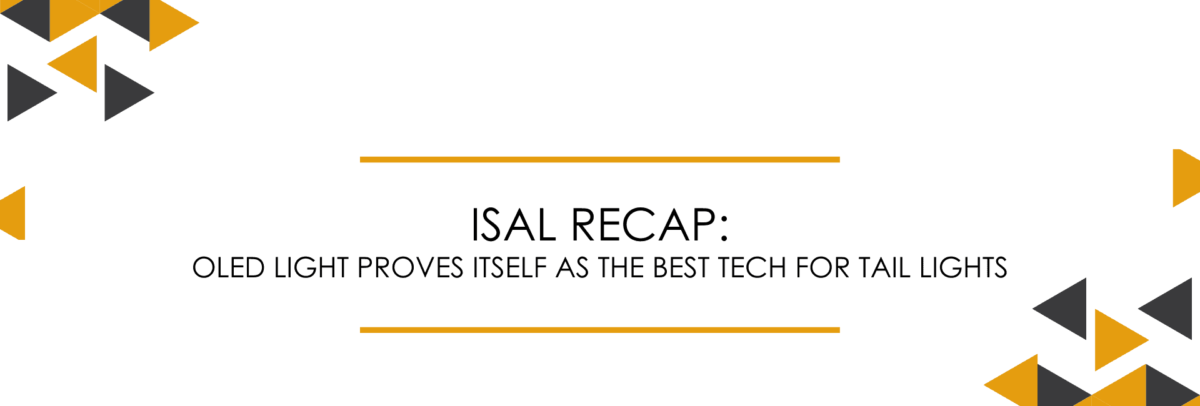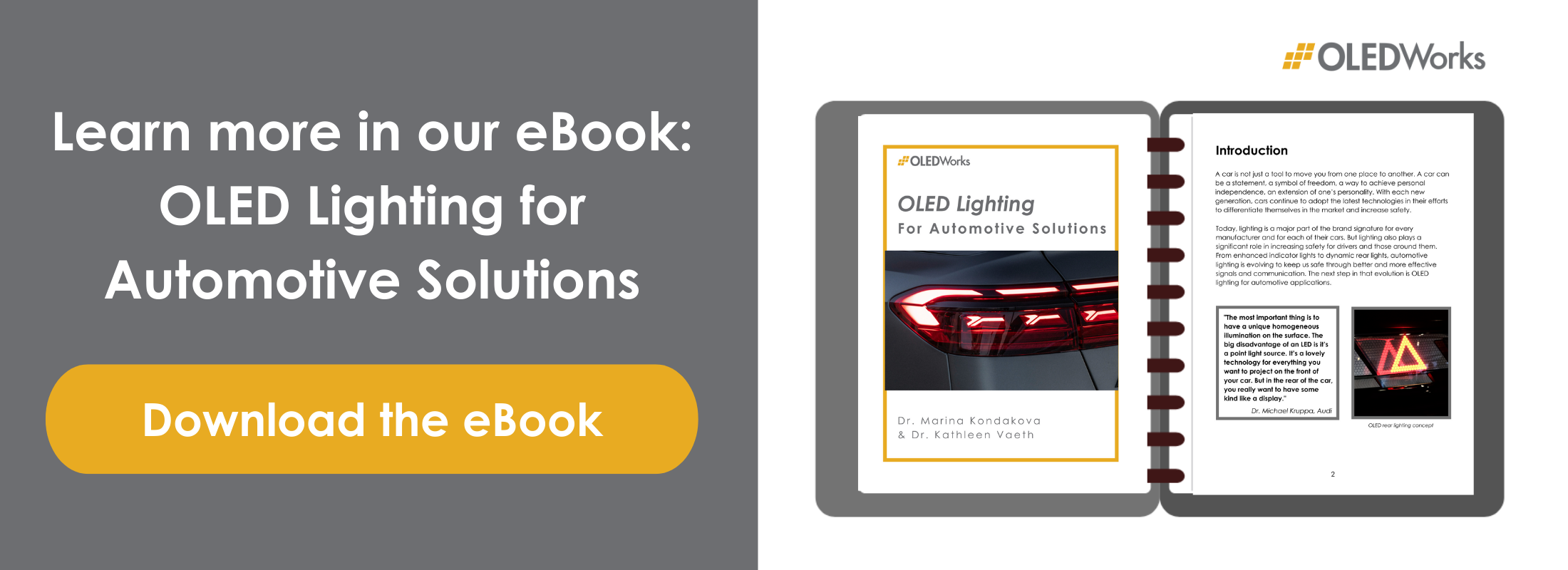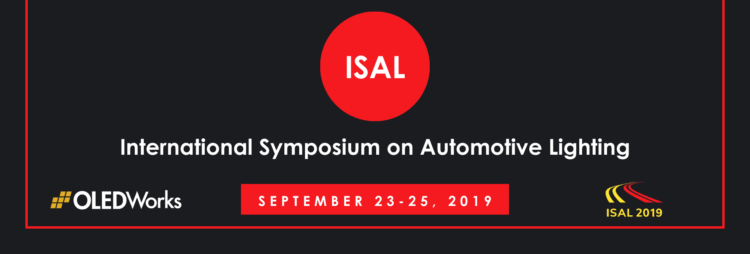
by Wolfgang Görgen, Managing Director OLEDWorks GmbH
Maybe you already read in our blog post OLED: The Ideal Tail Lamp Light Source how OLEDWorks has recognized the potential of OLED panels as the optimal light source for automotive applications. (If not, we invite you to do so!). But as ISAL has shown us, we are not the only ones who think so! Okay, not everybody is into OLED lighting like us, but you could see at the show that most of the participants agreed: The ideal light source (for tail lamps) would be thin, uniform and highly efficient while also being able to be segmented for dynamic lighting enabling a communication function.
OLED lighting as a communication device? YES!
Fraunhofer FEP demonstrated flexible OLED light strips on plastic that with appropriate control electronics, enable additional lighting effects, such as dimming and dynamic warning capabilities.
Other exhibitors showed LED based bendable solutions, or “imitated” flat area surface lights, but the problem remains: using a point light source to illuminate a defined area leaves much to be desired.
All these exhibits show that there is a demand in the automotive industry for surface illumination in tail light applications. Spot on for OLED! OLEDs have the ability to perfectly illuminate a defined area. As light is being created uniformly in the organic layers, no further scattering by additional lenses is needed.
The highlight of ISAL 2019 – Digital OLED Technology
We may be biased, but the Digital OLED technology at the OLEDWorks booth was a major hit among visitors. A rear light demonstrator, built by Audi, consisted of 16 red, segmented OLEDs. Each OLED is divided in 60 segments, and each segment is individually addressable and dimmable. The perfect contrast ratio and minimal spacing between the segments are features that are currently only able to be realized with OLED lighting technology’s intrinsic properties.
This segmentation can serve as a display in the rear lights for car-to-x communication and shows different symbols like a red triangle to alert other drivers. To do so, as for every LED and OLED solution, a driver is required. The newly developed (O)LED driver was provided by STMicroelectronics and allows the individual addressing of each segment.
The impressive demonstrator was a result of the collaboration between Audi, STMicroelectronics and OLEDWorks. The building blocks that came together to create a refined final product was a key differentiator from other rear lamp technologies.
Unique design freedom with flexible Digital OLED Technology
And now imagine all this with flexible OLED lighting panels… Where the light source follows the curve of the car. Using Willow® Glass by Corning®, OLEDWorks can manufacture flexible OLED panels with the same quality as our rigid engines. Are you already imagining futuristic looking cars? Maybe not so futuristic any longer?! Audi´s Mr. Berlitz, Head of Lighting Innovation, is already inspired by this possibility.
These innovations open a door to a new future for automotive lighting – and the revolution has just begun.


![[eBook] OLED Lighting for Automotive Solutions](https://www.oledworks.com/wp-content/uploads/2022/02/Automotive-eBook-Header-750x254.png)
